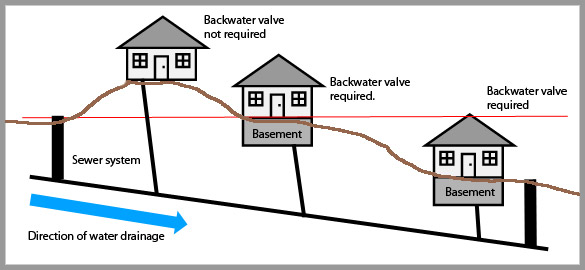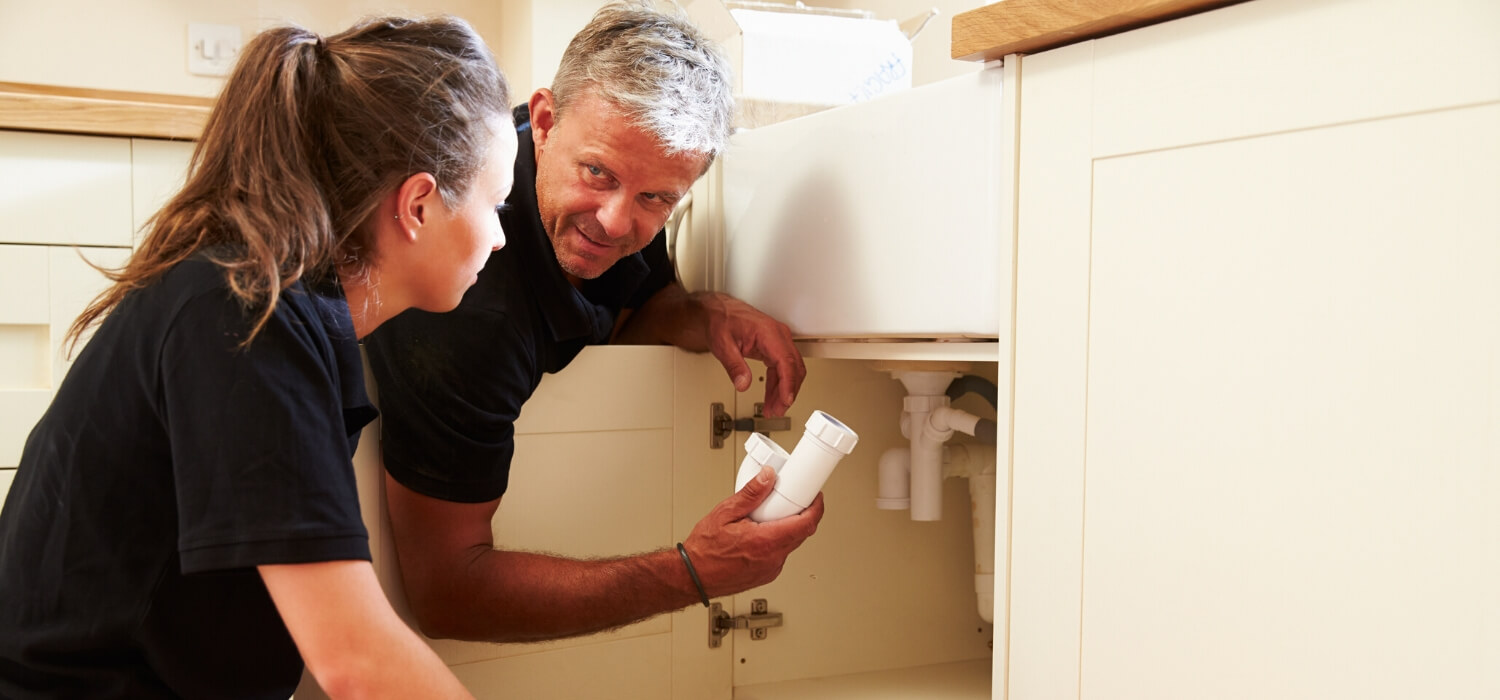A Guide to Your House's Plumbing System Anatomy
A Guide to Your House's Plumbing System Anatomy
Blog Article
Just how do you really feel on the subject of Plumbing Installation 101: All You Need to Know?

Comprehending how your home's pipes system works is essential for every single home owner. From delivering clean water for alcohol consumption, food preparation, and bathing to safely getting rid of wastewater, a well-maintained plumbing system is critical for your family members's health and comfort. In this thorough guide, we'll discover the detailed network that composes your home's plumbing and offer tips on upkeep, upgrades, and managing typical problems.
Intro
Your home's plumbing system is more than simply a network of pipes; it's a complicated system that ensures you have access to tidy water and effective wastewater removal. Knowing its components and how they work together can aid you protect against pricey fixings and make certain every little thing runs efficiently.
Standard Elements of a Pipes System
Pipelines and Tubing
At the heart of your pipes system are the pipelines and tubes that lug water throughout your home. These can be made of various materials such as copper, PVC, or PEX, each with its advantages in terms of toughness and cost-effectiveness.
Components: Sinks, Toilets, Showers, and so on.
Fixtures like sinks, commodes, showers, and tubs are where water is made use of in your house. Understanding just how these fixtures link to the plumbing system helps in diagnosing troubles and intending upgrades.
Shutoffs and Shut-off Factors
Shutoffs manage the flow of water in your plumbing system. Shut-off valves are vital during emergencies or when you require to make fixings, permitting you to separate parts of the system without interrupting water circulation to the entire house.
Water System
Main Water Line
The major water line links your home to the local supply of water or an exclusive well. It's where water enters your home and is dispersed to different components.
Water Meter and Pressure Regulator
The water meter procedures your water usage, while a stress regulatory authority guarantees that water flows at a secure stress throughout your home's plumbing system, preventing damage to pipes and components.
Cold Water vs. Hot Water Lines
Recognizing the difference in between cold water lines, which provide water directly from the major, and hot water lines, which carry warmed water from the hot water heater, helps in repairing and planning for upgrades.
Water drainage System
Drain Pipes Piping and Traps
Drain pipelines bring wastewater away from sinks, showers, and commodes to the drain or septic tank. Traps prevent sewage system gases from entering your home and likewise trap particles that could create clogs.
Air flow Pipes
Ventilation pipes enable air into the water drainage system, avoiding suction that could slow down drainage and cause catches to empty. Correct air flow is essential for preserving the honesty of your plumbing system.
Value of Appropriate Drain
Ensuring correct water drainage avoids backups and water damages. On a regular basis cleaning up drains and keeping catches can avoid expensive repairs and prolong the life of your pipes system.
Water Heating Unit
Types of Water Heaters
Hot water heater can be tankless or standard tank-style. Tankless heating units warm water on demand, while containers keep warmed water for instant use.
Just How Water Heaters Attach to the Plumbing System
Comprehending how hot water heater connect to both the cold water supply and hot water circulation lines helps in identifying concerns like inadequate warm water or leaks.
Upkeep Tips for Water Heaters
Frequently flushing your hot water heater to remove debris, inspecting the temperature level settings, and evaluating for leaks can expand its life expectancy and boost energy performance.
Usual Pipes Issues
Leakages and Their Causes
Leakages can occur as a result of maturing pipelines, loosened installations, or high water pressure. Dealing with leaks promptly protects against water damage and mold growth.
Obstructions and Clogs
Obstructions in drains and toilets are typically caused by purging non-flushable items or an accumulation of grease and hair. Utilizing drain displays and being mindful of what drops your drains pipes can protect against blockages.
Indicators of Plumbing Issues to Expect
Low water pressure, sluggish drains pipes, foul odors, or uncommonly high water costs are indications of potential plumbing troubles that ought to be attended to promptly.
Plumbing Maintenance Tips
Routine Assessments and Checks
Set up yearly plumbing assessments to capture concerns early. Seek indicators of leaks, deterioration, or mineral buildup in faucets and showerheads.
DIY Upkeep Tasks
Straightforward tasks like cleaning faucet aerators, checking for toilet leakages making use of color tablet computers, or protecting subjected pipelines in chilly climates can avoid major plumbing issues.
When to Call a Professional Plumbing
Know when a pipes concern calls for specialist competence. Attempting intricate repair work without appropriate understanding can cause more damage and higher repair service expenses.
Updating Your Pipes System
Reasons for Updating
Updating to water-efficient fixtures or replacing old pipelines can boost water quality, minimize water expenses, and increase the value of your home.
Modern Plumbing Technologies and Their Advantages
Check out technologies like smart leakage detectors, water-saving toilets, and energy-efficient hot water heater that can conserve cash and lower environmental effect.
Price Factors To Consider and ROI
Compute the upfront prices versus long-term cost savings when thinking about plumbing upgrades. Numerous upgrades pay for themselves via lowered energy bills and less repair services.
Environmental Effect and Preservation
Water-Saving Fixtures and Devices
Setting up low-flow faucets, showerheads, and toilets can dramatically lower water use without compromising performance.
Tips for Reducing Water Usage
Simple habits like dealing with leaks immediately, taking shorter showers, and running full tons of laundry and recipes can save water and lower your energy bills.
Eco-Friendly Plumbing Options
Take into consideration sustainable pipes products like bamboo for flooring, which is durable and environmentally friendly, or recycled glass for kitchen counters.
Emergency situation Preparedness
Steps to Take During a Plumbing Emergency situation
Know where your shut-off valves lie and exactly how to switch off the water supply in case of a burst pipe or significant leakage.
Significance of Having Emergency Situation Calls Handy
Keep contact information for local plumbings or emergency solutions conveniently offered for quick reaction during a plumbing crisis.
DIY Emergency Fixes (When Appropriate).
Short-term repairs like making use of duct tape to patch a dripping pipeline or putting a bucket under a trickling faucet can minimize damages until a specialist plumbing gets here.
Final thought.
Recognizing the composition of your home's pipes system encourages you to keep it effectively, saving time and money on repair services. By adhering to regular maintenance regimens and remaining educated about contemporary pipes technologies, you can ensure your pipes system operates successfully for many years to come.
HOW YOUR PLUMBING SYSTEM WORKS
Which Pipes Do What?
Blue lines = fresh water supply entering the building
Red lines = hot water supply entering the building
Grey lines = pipes carrying waste away from the building and venting pipes carrying gases away from the building (through the roof)
YOUR MAIN PLUMBING SYSTEMS
There are two main plumbing systems that support your home s basic plumbing needs one that brings clean water into your home, and one that sends dirty water away from your home. Connected to the toilet, bath, shower, and other faucets in your home, these two systems keep your water flowing in the right directions.
ACCESSING FRESH WATER
Fresh and clean water is brought into your home through the main water supply line . Filtered through one pipe, this water is pressured to flow into the various fixtures in your home at any given time.
This water can be sourced from a well located on your property, a pond or river (mostly cottages), or, as in most cases, from the city s municipal water treatment centre. However, it is important to note that water that is untreated, such as the water siphoned from ponds or rivers, may not be safe to drink. Personal water supplies always need to be treated for hardness and contaminants before consumed.
MUNICIPAL WATER SUPPLIES
Improve taste and odour
Remove sediment
Eliminate hardness
Reduce chlorine
COLD WATER SUPPLY VS. HOT WATER SUPPLY
Cold water flows into your home or building through the service line, which then distributes hot or cold water to your fixtures. This line is most commonly run through a central column that runs floor to floor. Hot water runs in short and straight pipes as the longer the pipeline, the more heat that will be lost in the transfer. Having shorter pipes also allows residents to access hot water more quickly.
WASTE WATER SYSTEM
Your wastewater system is divided into two parts pipes that send wastewater away from your home and venting pipes that send sewer gas away from your home. Sewage water travels through pipes that flush the water and waste towards local sewers that are operated and managed by your city or town. Most sewer systems rely on gravity to move the wastewater to where it needs to go.
The further away from your toilet or sink, the larger wastewater pipes become. This allows for waste to be disposed of from various parts of your home or business at once without pipe blockages. The angle and flow of these pipes are also essential for keeping your waste pipes clear of build up.
https://harrisplumbing.ca/how-your-home-plumbing-system-works/

HOW YOUR PLUMBING SYSTEM WORKS
Which Pipes Do What?
YOUR MAIN PLUMBING SYSTEMS
There are two main plumbing systems that support your home s basic plumbing needs one that brings clean water into your home, and one that sends dirty water away from your home. Connected to the toilet, bath, shower, and other faucets in your home, these two systems keep your water flowing in the right directions.
ACCESSING FRESH WATER
Fresh and clean water is brought into your home through the main water supply line . Filtered through one pipe, this water is pressured to flow into the various fixtures in your home at any given time.
This water can be sourced from a well located on your property, a pond or river (mostly cottages), or, as in most cases, from the city s municipal water treatment centre. However, it is important to note that water that is untreated, such as the water siphoned from ponds or rivers, may not be safe to drink. Personal water supplies always need to be treated for hardness and contaminants before consumed.
MUNICIPAL WATER SUPPLIES
COLD WATER SUPPLY VS. HOT WATER SUPPLY
Cold water flows into your home or building through the service line, which then distributes hot or cold water to your fixtures. This line is most commonly run through a central column that runs floor to floor. Hot water runs in short and straight pipes as the longer the pipeline, the more heat that will be lost in the transfer. Having shorter pipes also allows residents to access hot water more quickly.
WASTE WATER SYSTEM
Your wastewater system is divided into two parts pipes that send wastewater away from your home and venting pipes that send sewer gas away from your home. Sewage water travels through pipes that flush the water and waste towards local sewers that are operated and managed by your city or town. Most sewer systems rely on gravity to move the wastewater to where it needs to go.
The further away from your toilet or sink, the larger wastewater pipes become. This allows for waste to be disposed of from various parts of your home or business at once without pipe blockages. The angle and flow of these pipes are also essential for keeping your waste pipes clear of build up.
https://harrisplumbing.ca/how-your-home-plumbing-system-works/
As a passionate reader about Understanding Your Home's Plumbing Anatomy, I imagined sharing that piece of content was smart. Feel free to take the opportunity to share this article if you appreciated it. Many thanks for taking the time to read it.
Go Services Report this page